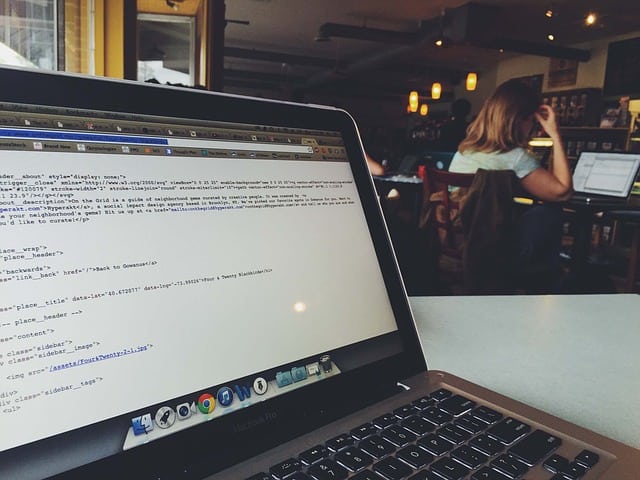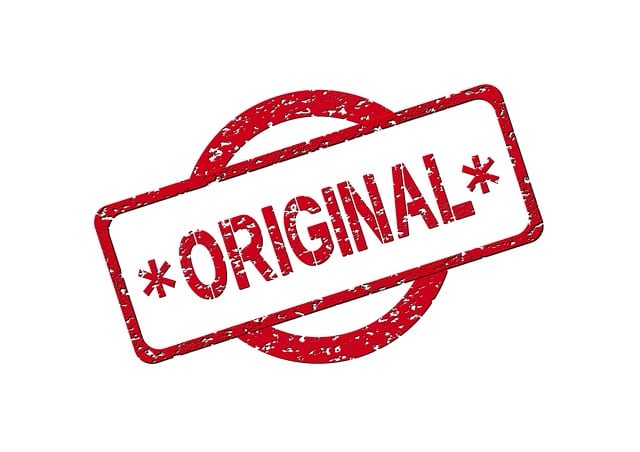When a college research paper is due, you scour the Internet (and some, the good old library) for sources. Almost instantly, you find the information you need and include them in your work. You review your paper for clarity, grammar, and coherence to ensure impeccable writing. You polish it one last time so that it satisfies your awesome-writing checklist.

Just when you think you’re about done and ready to hit that “submit” or “print” button, here’s what you should do: hold it right there.
Ask yourself these three questions:
“Are all these ideas mine? If not, does it appear like I am claiming them as such?”
“Did I copy-paste any sentence from a source?”
“Am I properly citing the original owners and sources of everything I have written here?”
Don’t be part of the 36% of undergraduates all over the globe who have committed plagiarism in their written work. Refuse to become a statistic.
Page Jumps!
- So, What Really is Plagiarism?
- Forms of Plagiarism and Their Complexities
- Why Do Students Plagiarize?
- How Student Plagiarism Is Detected
- The Case of the “Famous Plagiarists”
- What the Law Says
- Ways NOT to Plagiarize
- Reasons NOT to Plagiarize
- How to Avoid Plagiarism: Tips from Top Universities
- Conclusion
So, What Really is Plagiarism?
By definition, plagiarism refers to “the appropriation of language, thoughts, or ideas of another author and claiming that as one’s own”.
Plagiarism is known to thwart the academic integrity that all scholarships should strive for. Fostering “honesty, trust, respect, fairness, and responsibility” among students and in academic institutions, academic integrity expects students and scholars to, among other things, respect the work and ideas of others by practicing proper citation at all times.
A research guide from St. Clair County Community College considers academic integrity as an essential element in developing professional conduct among students. This couldn’t be more relevant as professional researchers and writers also struggle with proper attribution without compromising their goal to present themselves as capable of developing new ideas.
Forms of Plagiarism and Their Complexities

There is no question about it: it is unethical to not properly attribute original owners or sources of written materials and ideas. But there is more to it than just that, especially as the technical definition of plagiarism is anything but definite.
If you are a student, an aspiring author, or a seasoned writer who isn’t very sure about the actions that constitute plagiarism, you are not alone. It is a complex concept on its own, as much as it is of an ambiguous, arguably controversial nature.
While there are writing practices that are generally frowned upon because they scream plagiarism, there is that thin invisible line between the what-is and the what-isn’t, and making a judgment call can be perplexing.
In a general sense, here are the types of plagiarism and specific acts that point to this crime:
- Direct Plagiarism involves copying someone else’s work almost or completely verbatim without proper citation.
- Paying someone to write for you, turning it in, and claiming that it is yours.
- Self-plagiarism or “double dipping” is re-submitting written materials or parts of it that have been previously submitted or published as though they were new.
- Mosaic Plagiarism is when an original quote or statement is used or borrowed without using quotation marks. It also happens when a statement (and sometimes an entire work) is paraphrased or the terms are replaced with their synonyms while still retaining the original one’s structure and meaning.
- Also called Patchwriting, in which you do not make proper citations of the source and often with the intent of making the material look like it’s 100% your own. This type is considered Accidental Plagiarism under the assumption that sometimes, people simply “forget” to provide footnotes.
Tackling the Gray Areas
The University of Massachusetts points out how the global academic world struggles to be unequivocal in its view of plagiarism. This is because of, among other things, academic and intellectual landscape changes in terms of research techniques and writing practices, coupled with a lack of inflexible, definite plagiarism rules and differences in interpretation.
Apart from the lack of black-and-white plagiarism policies, today’s digital technology has become a double-edged sword: it makes committing plagiarism easy through readily accessible sources while also subjecting every written work to extreme scrutiny based on ambiguous rules.
Teresa Fishman, 2010 director of the International Center for Academic Integrity put it best in her observation published in The New York Times:
Now we have a whole generation of students who’ve grown up with information that just seems to be hanging out there in cyberspace and doesn’t seem to have an author. It’s possible to believe this information is just out there for anyone to take.
Perhaps a popularly acknowledged gray area in the case of plagiarism is music sampling. The World Intellectual Property Organization, an international forum that tackles intellectual property, defines this practice as “the extraction of fragments from existing musical works, which are used in the composition of creative, new pieces.”
Sampling has been a common practice in the United States for decades constantly attracting controversy and serious legal implications, particularly in the rap music industry.
WIPO points out a 1991 U.S. federal court case that prompted hip-hop music makers to secure permission from copyright owners when sampling. A stark contrast to this is the music industry in Poland, which discourages taking sampling to court, resulting in little development on Polish laws regarding the matter.
Why Do Students Plagiarize?
Has plagiarism in academic institutions reached epidemic proportions? A 2017 survey by Plagiarism.org revealed that high school, undergraduate, and even graduate students have committed plagiarism by copying without citing sources, paraphrasing statements without footnoting, or turning in written works that they claimed were theirs.
It is worth mentioning that for several decades, instructors and academies have been developing awareness campaigns and policies against plagiarism. They have taken concrete steps to detect, address, and prevent it as it not only mars the integrity of the student and the academic institution they are attending but also thwart efforts to break the vicious cycle.
This begs the question: If plagiarism has long been considered taboo, why do students, even to this day, still find themselves breaking the rule?
Various research and studies reveal that students plagiarize for these reasons:
- Pressure to get good grades and fear of failure
- Lack of ample time for thorough research; easier to simply copy
- Procrastination and lack of time management skills
- Ignorance or confusion about plagiarism and the relevant policies in their school or university
- Lack of genuine interest in the assignment
- The “everybody’s-doing it-so-how-will-I-get-caught” mentality
On an academic level, plagiarism on all written work ranging from a simple essay to an all-important research paper can result in failing grades, suspension, negative recommendations, and expulsion.
How Student Plagiarism Is Detected

Students who think they can outsmart their professors and readers are in for a surprise: there are telling signs that a written work may not be strictly yours. In recent years, certain techniques have been developed in the academe to point out an outstanding piece that could possibly be a massive plagiarism case staring right back at them.
Here are two of the most obvious signs that a student’s work may be plagiarized:
Inconsistencies in Writing Style
It will not be uncommon for a professor to have a good idea of a student’s writing style. If certain statements and phrases in a written piece make an instructor think, “This is not how this student usually writes,” they would usually check for unauthorized copying. Professors also usually consider it a red flag when something seems alarmingly certain or too conclusive in that research paper—and no attribution is made.
Paraphrasing Seems “Off”
Student plagiarists get caught when they paraphrase sentences to take certain ideas or concepts as theirs and the resulting statement is highly suspicious. As they turn, twist, or find synonyms in an effort to reconstruct the statements, sentence construction and grammar often become questionable.
It is also common knowledge that in the age of modern technology, there are “software-assisted checkers” have been developed. While limited in terms of results, it does help anyone get started with spotting inconsistencies and eventually determining whether or not your work is plagiarized—and with detailed information at that.
The Case of the “Famous Plagiarists”
It is no secret that in recent years, several plagiarism cases have made the headlines, evidencing that while accusations of plagiarism keep regular students on their feet, it has also been thrown at popular celebrities and esteemed individuals across all generations and industry verticals.
A plagiarism case of an academic nature that earned enormous popularity was that of former U.S. Vice President Joe Biden. Under political pressure, Biden admitted in 1986 to have plagiarized a review paper he wrote as a freshman law student at the Syracuse University College of Law.
The then-senator referred to the act as “a mistake” but insisted it was not a “malevolent” one. The plagiarized article was published in the May 1965 issue of Fordham Law Review.
There’s no argument that when it comes to plagiarism, most people are generally aware of how highly prevalent they are in written materials. Some, however, have been publicly scrutinized for speaking out about information that was found to be “stolen” or taken from previously spoken or published work.
Who can forget the 2016 speech of then-aspiring U.S. First Lady Melania Trump at the Republican National Convention that was oddly familiar? Turned out it was the same words Michelle Obama said in 2008. Not only that; social media warriors were quick to point out that no less than then-presidentiable Donald Trump “copied” a full paragraph of then-outgoing president Barack Obama’s speech at the Democratic National Convention!
Besides plaguing the world of politics, plagiarism scandals also hounded modern media personalities, reporters and journalists; Hollywood celebrities, music icons; scientists; and Pulitzer Prize-winning and best-selling authors. Even historical figures Martin Luther King and Helen Keller were accused of being plagiarists but there were neither admissions made by them nor further actions taken to prove the claims.
The end results, as far as these popular cases went, varied from no major action to suspension to settlements and legal lawsuits. The most lasting consequence for all these famous “accused plagiarists” perhaps, is—or was—tarnished reputation throughout their professional lives.
What the Law Says
Plagiarism among students often results in various types of punishments imposed by the college or university according to their own set of rules. However, student plagiarists are not insusceptible to its legal repercussions.
Generally speaking, a plagiarist can be sued based on the nature of the act. When their action constitutes copyright infringement, they can face legal action. Copyright, which are rights exclusively granted to the creator of any work or invention such as published and unpublished writing pieces, are protected by Copyright Laws.
Education, awareness, and services site CheckForPlagiarism.net underscores that Besides punishments based on copyright infringement, a plagiarist will have to answer for possible charges against them under the Stop Online Piracy Act (SOPA), the Protect IP Act (PIPA), the laws governing Fraud, and Trademark and Unfair Competition laws.
On the legal front, plagiarism is a serious matter. Direct consequences to the violator could include:
- monetary award based on damages or lost profits or income;
- criminal prosecution that entails payment of fines, community service, and jail time on top of a civil case.
Ways NOT to Plagiarize
A deeper understanding of plagiarism leads to a conclusion for students: even “sloppy referencing” is closely linked to “serious plagiarism” so don’t take chances.
Here are things you can do:
Proudly admit, “It’s not mine.”
In just about any statement you make that is not yours, always acknowledge the original source. It sounds simple but many students and professionals fail to realize that it is basic ethics to quote the author whose words you borrowed. It is important to follow the proper rules of acknowledgment, quotation, and citation as you direct your readers to the rightful owner of the idea or concept.
So, when doesn’t your writing run the risk of plagiarism? Generally, you don’t need to cite sources when you write about an experience that is really your own, share general knowledge or information, and express your opinion or analysis. It is therefore critical to evaluate what exactly it is that you are writing. If they fall into one or all of these categories, you’re good to go.
To be sure, ask yourself these two important questions:
- Did I know this information before I started my course?
- Did this information/idea come from my own brain?
If you answered no to either or both, cite your sources accordingly. And remember to do it right. You are better off over-referencing than skimping, as the University of Toronto puts it.
When Still in Doubt, Write Your Own

When a statement or finding is worth reiterating in research material, what’s the best course of action for someone who is writing about the same subject?
It is suggested that you read your source carefully and understand it fully. Process and organize your thoughts and write about the parts that stood out for you—using your own words. This not only keeps you from copying the material verbatim; it also hones your comprehension and writing skills in the process.
It’s no easy task but it can be learned. How else did those experts come up with their laudable written materials? Remember that your task goes beyond finding the right sources.
Reasons NOT to Plagiarize
We don’t hear a lot of plagiarists getting serious legal repercussions for their actions. However, we all know a marred integrity is almost like being convicted: when all is said and done, you realize your chances of making it in an opinionated world have thinned. You soon find out that your options have become limited.
A plagiarism accusation or case that follows you way after schooling reflects your lack of integrity and loss of credibility. If you can’t be honest as a university student, no employer would want to trust you. It’s a scenario no ambitious college student would want to deal with in the future. Indeed, a plagiarism record has serious implications not only on your status as a student; it also puts your future career at stake.
While avoiding the negative consequences and penalties of plagiarizing should deter any student from plagiarizing, it is also worth looking into “the good reasons” to NOT even consider it:
- Citing original material authors and owners shows your respect for others’ work.
- Proper attribution of your reliable sources demonstrates your outstanding research skills.
- Citing sources adds authority to your work.
- As opposed to merely copying research information, writing them in your own words hones your critical thinking abilities. It prompts you to analyze or question what is being stated.
- Writing your own or citing your sources properly is a great way to hone your writing skills.
- Writing allows you to express your own ideas and even add value to the subject of discussion.
How to Avoid Plagiarism: Tips from Top Universities
Top-rated U.S. colleges and universities share a common stand against plagiarism. Articulating their stance against this crime against ethics and the law, offer useful, actionable tips to avoid situations that could compromise student integrity:
- “If you didn’t write it, cite it.” This is a simple rule that says it all and applies to all primary and secondary sources offline and online.
- Track your sources carefully, accurately, and completely. Doing this allows you to clearly point out which of the ideas you wrote are or aren’t yours.
- Understand and use citation standards. It also pays to learn citation styles that come in many forms.
- When paraphrasing, use your own words. Knowing when paraphrasing is acceptable and isn’t can be very tricky. Tread carefully to avoid the risk of plagiarism.
- Give yourself enough time to research and write. Do not procrastinate and then rush into finishing an academic paper. Work when you are best able to think clearly. Check and re-check your draft to be sure.
Remember that ignorance excuses no one. As you research for, write, edit, finalize, and submit that important paper, make sure you learn what plagiarism is all about and understand its far-reaching consequences.
Conclusion
The world is full of intellectual opinions that are truly worth reiterating and sharing. However, every student needs to understand the difference between declaring that someone’s statement resonates with yours and making wrongful claims that it is originally yours.
Avoiding plagiarism may be all about upholding personal or professional ethics and preserving academic integrity but it also boils down to treating others’ work with the respect it deserves.
As a university student whose role goes beyond being a mere spectator in the academic world, you are expected to contribute actively. Start by consciously avoiding copying others’ work. If you must, cite your sources properly. Better yet, voice out your own observations and craft your own statements to convey your message.
